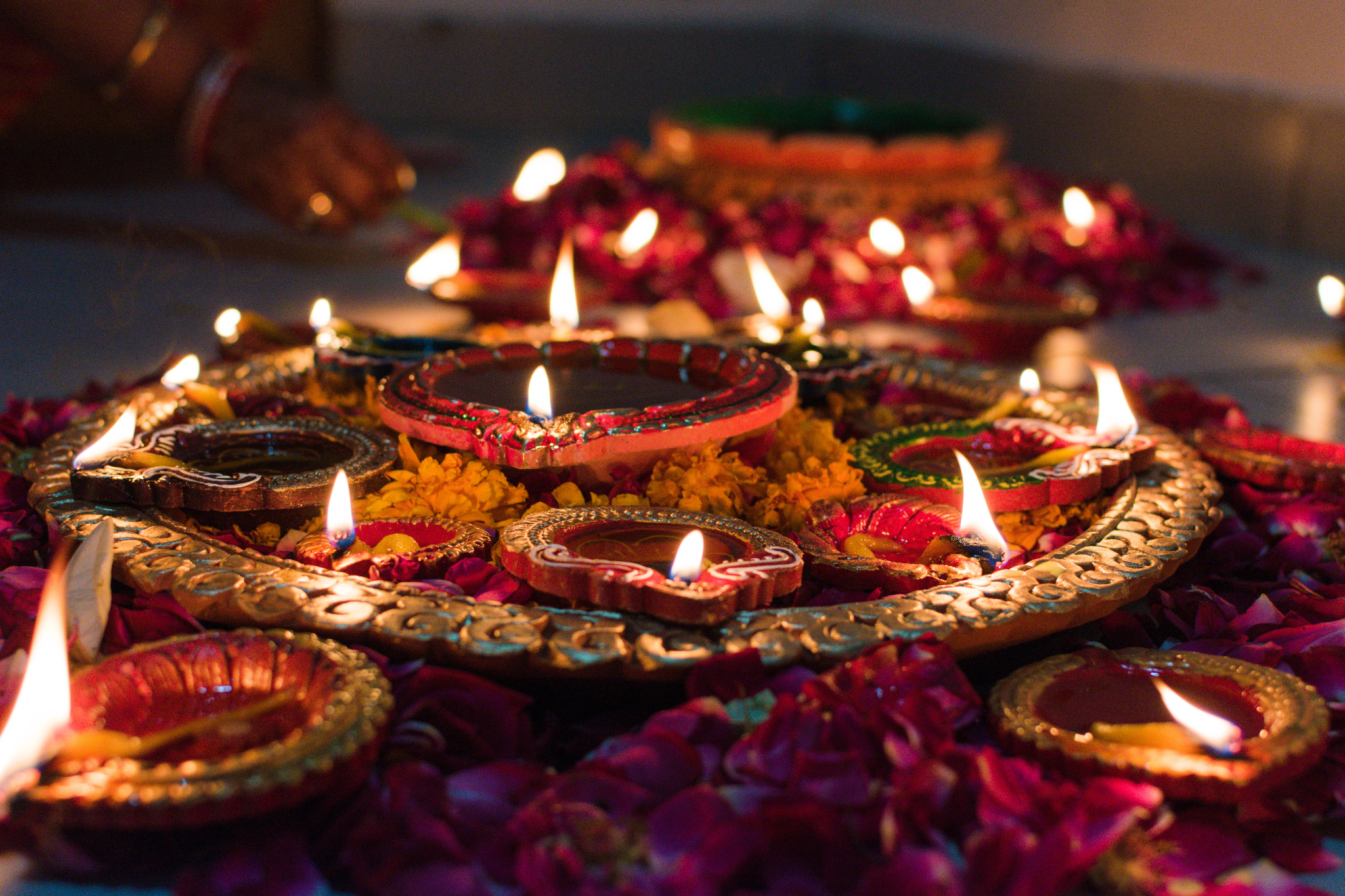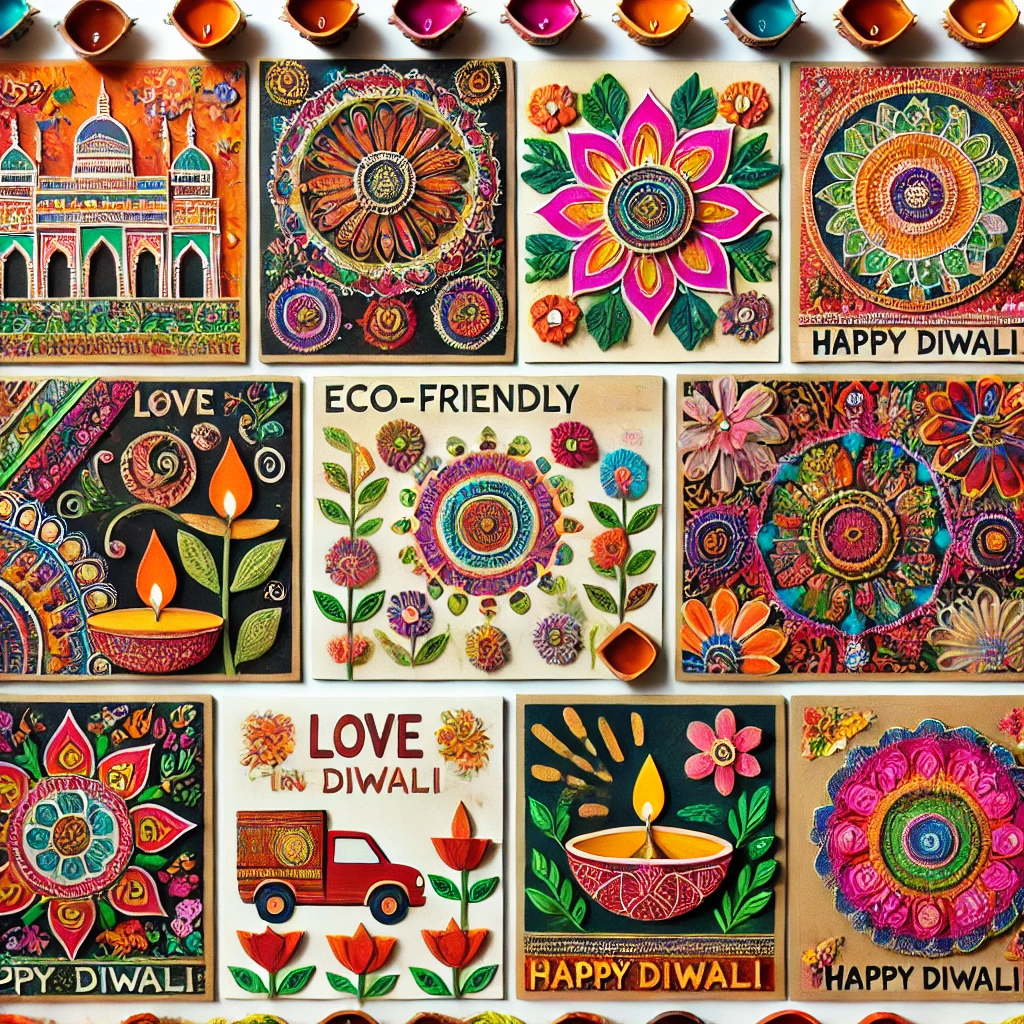What is Green Diwali? Meaning & Importance for CBSE Students
Green Diwali (2025)
Green Diwali in 2025 encourages us to celebrate the festival of lights with a focus on environmental responsibility and mindful traditions. This approach blends time-honored customs with practices that minimize pollution and promote sustainability, helping all of us to enjoy Diwali in a way that respects both culture and nature.

Know About: How to Celebrate an Eco-Friendly Diwali
What is Green Diwali & When is it in 2025?
After understanding why a sustainable Diwali matters, let’s explore what Green Diwali means and when it is observed in 2025. Green Diwali is a conscious approach to the traditional festival, emphasizing eco-friendly practices such as reducing firecracker use, minimizing waste, and prioritizing natural materials. In 2025, Diwali falls on 20th October (Lakshmi Puja), with related celebrations beginning on 17th October (Dhanteras) and continuing through 21st October (Bhai Dooj).
History and Cultural Context of Diwali
Knowing the importance of when and how Diwali is celebrated, it’s valuable to reflect on the festival’s rich traditions in Indian culture. Diwali, also called Deepavali, symbolizes the victory of light over darkness and good over evil. While rooted in Hindu mythology—particularly the return of Lord Rama to Ayodhya—it is also observed by Sikhs, Jains, and Buddhists, each adding unique meaning and rituals to the occasion. Green Diwali adapts these time-honored traditions to align with modern ecological awareness.
Check About it: Dussehra Celebrations
Significance of Green Diwali for Students
Connecting the festival’s history with present-day challenges, Green Diwali holds particular relevance for students and youth. By participating in eco-friendly celebrations, students lead by example, raising awareness of pollution and health issues linked to fireworks, and inspiring others to adopt mindful habits. It also offers an opportunity to learn about sustainability, community engagement, and innovative ways to preserve traditions responsibly.
Customs, Rituals, and Modern Green Practices
Understanding Green Diwali’s impact on students, let’s look at both the traditional customs and how eco-minded innovations are integrated.
- Diyas over Firecrackers: Lighting earthen lamps (diyas) is a core practice, symbolizing light and hope while avoiding the harmful air and noise pollution caused by firecrackers. Clay diyas or LED lights are commonly used.
- Eco-Friendly Rangoli: Rangoli, the art of creating patterns on the floor, is done with natural colors from flowers, turmeric, rice flour, and other biodegradable materials, reflecting creativity and respect for the earth.
- Natural Decorations: Replacing plastic with jute, paper, coconut leaves, or reusable fabric for streamers and torans reduces non-biodegradable waste and promotes traditional crafts.
- Clean Energy: Prioritizing solar-powered lights, energy-saving bulbs, or limiting overall power use minimizes carbon footprint during the celebrations.
- Community Sharing: Donating old clothes, food, or school supplies fosters inclusivity and helps support those in need, which aligns with Diwali’s spirit of giving.
- Eco-Friendly Celebratory Food: Prepare and share homemade sweets using fresh, local, and organic ingredients to support health and sustainability.

Regional Celebrations Across India
Building on these rituals, it’s helpful to see how Green Diwali concepts are embraced across India’s diverse regions. North India refers to Diwali as Deepavali, focusing on Lord Rama’s return, with growing campaigns for “No Crackers.” West Bengal emphasizes Kali Puja, often using clay lamps and flower-based decorations. In South India, Naraka Chaturdashi is central, and eco-friendly rangoli (kolam) is common. Maharashtra may include “Padwa” with minimal fireworks. In Gujarat, New Year is celebrated the day after Diwali with traditions like distributing sweets in sustainable packaging. States like Rajasthan and Tamil Nadu have promoted pollutions-free Diwali celebrations through school and community initiatives.
Tips & Etiquette for a Responsible Green Diwali
Having seen regional customs, here are practical tips and etiquette for celebrating Green Diwali responsibly in 2025.
- Choose eco-friendly decorations (like paper, cloth, or flower garlands) over plastic, and use clay diyas instead of electric lights to save power.
- Skip crackers; select green alternatives or celebrate with music, lights, and stories for safety and environmental care.
- Organize or join community clean-up drives before and after Diwali to keep local areas litter-free.
- If giving gifts, opt for locally made, reusable, or edible items packaged in recycled materials.
- Include everyone in celebrations—invite neighbors and friends of different backgrounds, and be mindful of pets, elderly people, and those sensitive to noise.
- Maintain study-life balance by scheduling festive activities outside peak study hours and using Diwali as a time to recharge.
- Dispose of waste properly and recycle candle stubs, paper, and boxes wherever possible.

How to Participate in Green Diwali: Simple Steps
Having learned these practical tips, here are some direct actions you can take to make your Diwali celebrations greener and more fulfilling.
- Make a Green Diwali poster or drawing and display it in your community or online to raise awareness.
- Host or join a “Go Green” rangoli contest using flower petals or natural colors only.
- Cook festive meals with local, organic produce and share recipes with friends and family.
- Create or share “Green Diwali” slogans and eco-friendly Diwali quotes on social media to inspire others.
- Volunteer with a local NGO or join a campus Diwali campaign to promote eco-conscious celebrations.

Quick Recap and Key Takeaways
To sum up the spirit of a Green Diwali, remember that small steps by each individual contribute to a cleaner, healthier environment and a more inclusive celebration. From sustainable food choices and natural decorations to supportive community efforts and thoughtful gifting, every act reflects Diwali’s true meaning—spreading light, joy, and responsibility.
FAQs on Green Diwali 2025: Easy Tips, Speech & Essay for Students
1. What is Green Diwali and why is it celebrated?
Green Diwali is an eco-friendly way of celebrating the Diwali festival while keeping environmental balance in mind. It is celebrated to:
- Reduce air and noise pollution by avoiding traditional firecrackers
- Encourage the use of natural, biodegradable decorations
- Promote responsible energy and resource use
- Raise awareness about protecting nature during festivities
2. How can students celebrate Green Diwali at home or school?
Students can celebrate Green Diwali by following these eco-friendly steps:
- Use clay diyas or LED lights instead of harmful crackers
- Decorate with natural materials like flowers and leaves
- Gift plants or homemade sweets
- Organise cleanliness drives and eco-awareness activities
- Avoid plastic and single-use items
3. Can you suggest some slogans or quotes for Green Diwali?
Here are some inspiring Green Diwali slogans and quotes:
- “Celebrate Diwali, Celebrate Nature!”
- “Brighten lives, not the sky – Say no to crackers.”
- “Go Green, Keep Diwali Clean!”
- “Eco-friendly Diwali is the best Diwali.”
4. What are the main differences between a traditional Diwali and a Green Diwali?
Traditional Diwali celebrations often involve bursting crackers, extensive lighting, and synthetic decorations. In contrast, Green Diwali focuses on:
- Using natural diyas and eco-friendly lights
- Reducing or avoiding firecracker use
- Preferring biodegradable decor
- Conserving energy and water
5. What are the best drawing or poster ideas for Green Diwali?
Green Diwali poster and drawing ideas:
- Children lighting diyas and planting saplings
- Earth wrapped with colourful rangoli and plants
- Slogans like "Clean and Green Diwali" with images of eco-friendly celebrations
- A family celebrating Diwali without crackers
6. What are some eco-friendly Diwali foods?
Eco-friendly Diwali foods include healthy, homemade sweets and snacks using seasonal, local ingredients. Examples:
- Baked sweets instead of fried options
- Fresh fruit platters
- Traditional ladoos made with organic nuts and jaggery
- Clay pot-cooked delicacies
7. How can we involve the community in Green Diwali celebrations?
To involve the community in Green Diwali, you can:
- Organise plantation drives and cleanliness activities
- Host competitions for the best eco-friendly rangoli or decorations
- Share environment-saving messages through events and assemblies
- Encourage all residents to avoid fireworks and plastic waste
8. Why are fireworks discouraged on Green Diwali?
Fireworks are discouraged on Green Diwali because:
- They cause air and noise pollution
- Release harmful chemicals into the environment
- Can harm animals and people with respiratory issues
- Are not sustainable for nature
9. Can you provide 10 lines on Eco-Friendly Diwali?
Yes, here are 10 lines on Eco-Friendly Diwali:
- Diwali is the festival of lights and joy.
- Celebrate by lighting diyas and candles, not crackers.
- Use natural and handmade decorations.
- Plant trees to spread greenery and happiness.
- Gift homemade sweets and eco-friendly items.
- Keep your surroundings clean and green.
- Save electricity by using LED lights.
- Support local artisans and small-scale industries.
- Spread love and awareness about environment protection.
- Let’s make this Diwali green and pollution-free!
10. What is the moral message of celebrating Green Diwali?
The moral message of Green Diwali is to respect nature and celebrate responsibly. Key takeaways include:
- Protecting the environment while enjoying traditions
- Choosing actions that support health and sustainability
- Inspiring others to make eco-friendly choices
11. Is there a lucky colour for Diwali celebrations?
While bright colours like green, yellow, red, and gold are considered auspicious during Diwali, the idea of a ‘lucky colour’ varies by tradition and family. For Green Diwali, green symbolises nature, growth, and harmony.
12. Where can I find sample essays and speeches on Green Diwali?
You can find sample essays and speeches on Green Diwali with easy openings, strong moral messages, and practical examples at trusted educational blogs, including Vedantu Diwali Essay for more support on writing and speech competitions.







